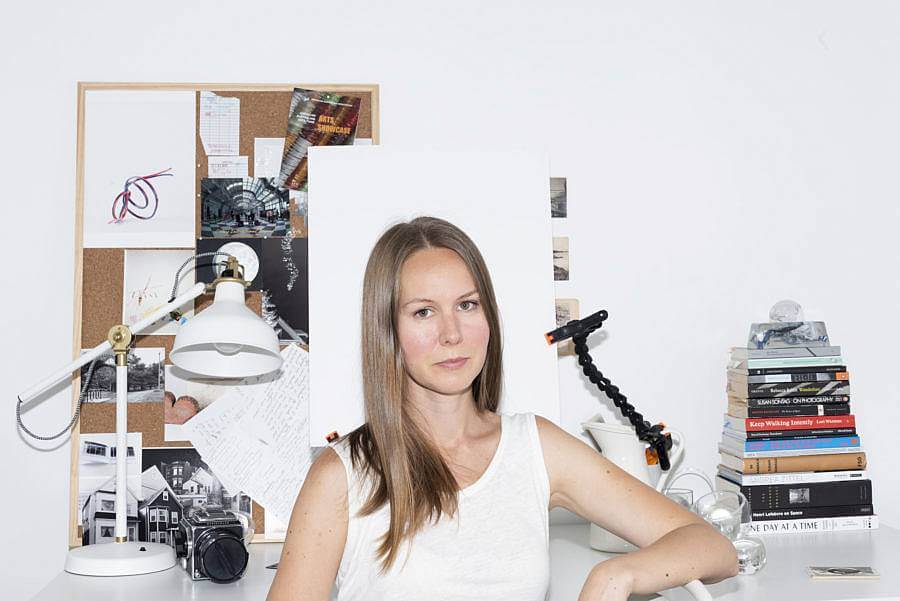Tell us a little bit about yourself and what you do.
I’m Australian, born and raised in Sydney. Growing up my family moved house numerous times. These geographic shifts led me to place a certain weight on inanimate objects as a way to tether myself to a new space quickly. I often gravitate to objects invested with a certain familiarity. I always note the transient things I see moving through a solid, structured setting; such as items on a sidewalk, lost or discarded, fallen leaves and trash. They hold a beauty, sadness, horror and fascination.
My background is in design, after completing a Bachelor of Communication Design I worked at an Australian fashion magazine. I keep on returning to this experience as it was a steep learning curve, both professionally and personally. As a woman in my mid-20s it helped me gain insight into how desire for items is constructed through image and word. And looking back, I realize how it encouraged the construct of a gendered image and societal norms. Although change seems to be occurring, these messages continue to permeate my everyday life.
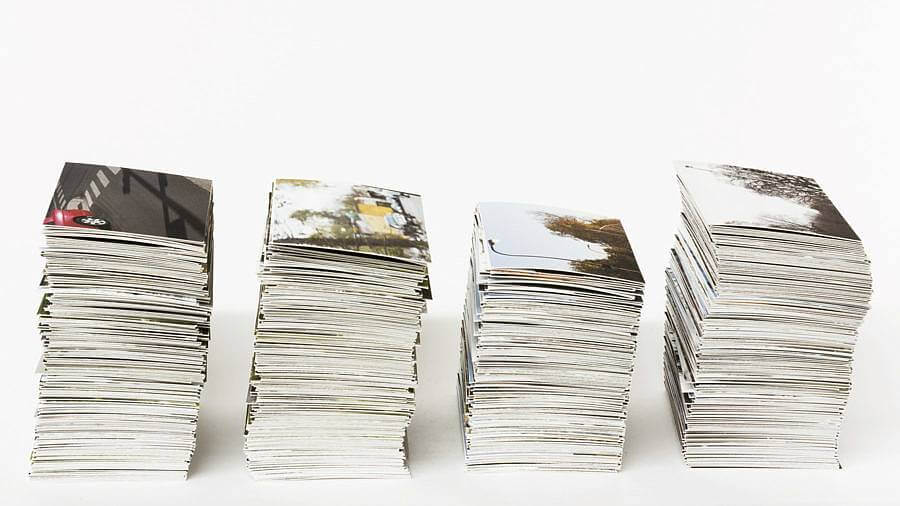
In my studio I compile still lifes using thrifted and discarded elements, found detritus and representations of vernacular architecture. These simultaneously quotidian and fanciful images consider the empathy and apathy people have for material items and their environs.
This examination of objects, along with my nascent glassmaking practice, has sparked a deep interest in transparent matter and the role it plays in containment, vision and reflection.
What are some recent, upcoming or current projects you are working on?
Holograms! I have recently done a workshop with artist Martina Mrongovius who is the director of New York’s Holocenter. I will soon be doing some more hot glass work alongside my usual photographic pursuits. These practical steps are bringing me closer to a convergence of my two focuses: glass and photography.
Can you talk about your relationship and work with glass? It makes perfect sense for a photographer to be interested in working with glass. How do these practices intersect?
I have been considering glass as a mechanism of distancing. The camera lens acts this way, windows do too. Glass can construct planes of containment, distortion and protection; the material itself is distinguished through reflection, dust and water on its surface.
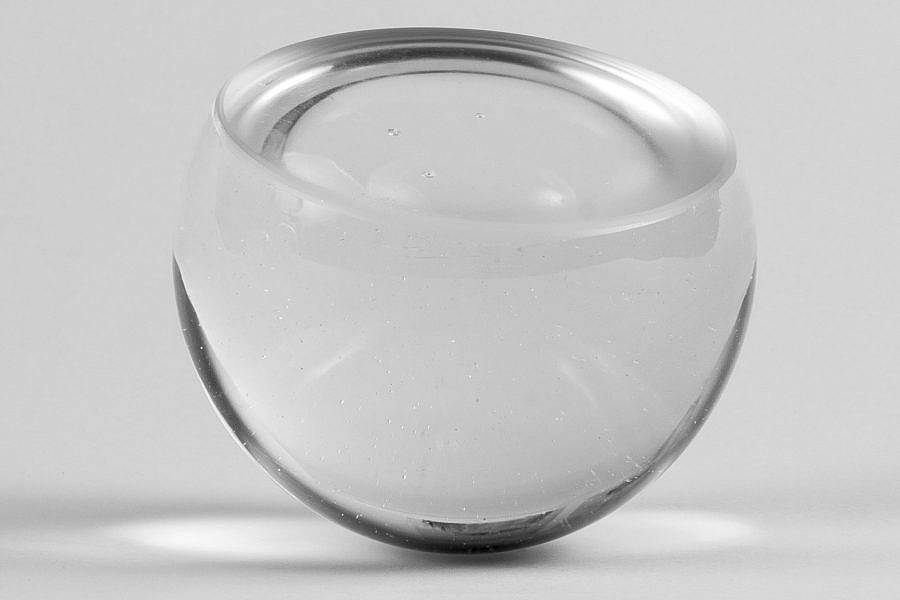
With my series Glass Drawings (2018) I was just learning how to handle hot glass. I wanted to encapsulate its fluidity, to delight in the process of freezing strings of glass as they haphazardly dribbled onto the marver. Knowing nothing of glassmaking prior to this I was confronted with something altogether surprising. It reminded me of a less precise version of Duchamp’s 3 Standard Stoppages (1913-14). My unconventional drawings in glass were then suspended, flooded with colored light and photographed. They now exist solely as photographs.
How did you become interested in photography?
I think the interest was always there, I was always the photographer even before being conscious of it. Photography permitted me to feel a sense of purpose whilst idly walking, it allowed me to re-examine the world around me and it generated structure where there was none. My interest became more and more intense. I remember I would spend my weekends using up a roll of film then during the week I would run to get it developed over my short lunch break, pick it up days later and repeat the process. This continued until it was an all encompassing obsession that prompted me to leave my job and return to university to undertake a BFA in Sydney, followed by an MFA in Chicago at SAIC.

This is an early image (shot on medium format) leading up to the “Deconstruct/Reconstruct/Isolate” series (2018).
What are your favorite locations or subjects to photograph and why?
This is never set, what is my favorite location for months will change as my circumstances do. I had a fascination with my Chicago neighborhood of Logan Square. The area has such an incredible history and when I moved there in August 2017 it was already in the throes of gentrification, and there was a lot of movement, a lot of rapid change. This is an inevitable part of being in a large city. Yet, there is still a certain amount of sadness that comes along with witnessing such changes.
As someone not from Chicago, what was it like to attend school and make work in Chicago?
In the months leading up to grad school I was living on Sydney’s Northern Beaches where people worship the ocean, it dictates their way of life. Outside spaces are heavily trafficked by runners, surfers and heliophiles year-round. The seasons are not distinct, winter is a slight drop in temperature. My first Chicago Winter was not brutal, but it was extremely cold by comparison and it was l-o-n-g. I developed a preoccupation with the weather. Chicagoans are tough people, nothing stops them. I hope some of this resilience has rubbed off onto me.
To locate myself within this unfamiliar space and to help comprehend the city format I walked 24 miles of Chicago’s parks and boulevard system during that first Fall. This assisted me to adapt and resulted in The Walks (2017). I recognize parks as requisite for urban living and these long corridors of green space connect such diverse areas.
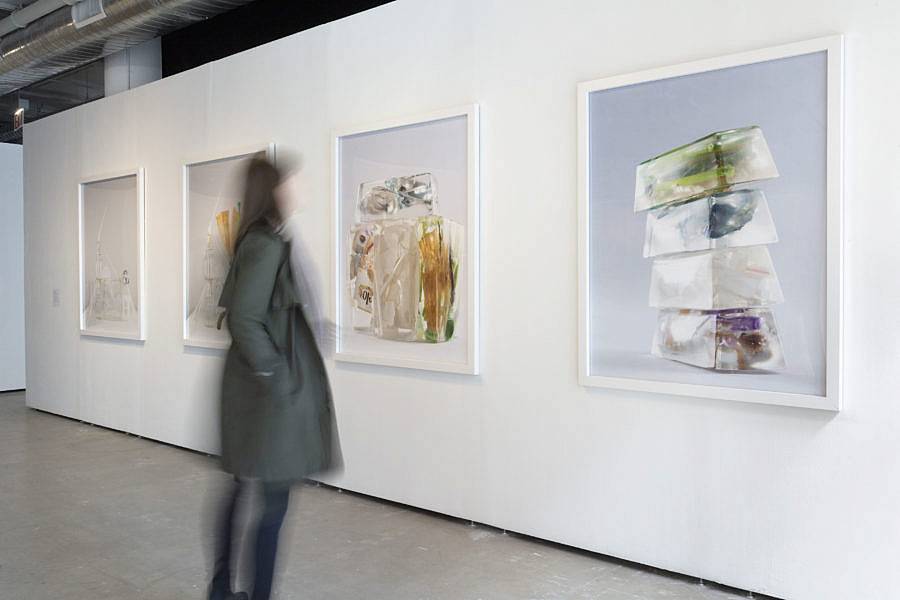
Attending grad school was one of the best and hardest decisions I have ever made. Chicago offered a balance of impressive faculty, incredible facilities and a dedicated cohort. This was what attracted me to the school when making my final choice.
Can you talk about your photo series Deconstruct / Reconstruct / Isolate?
Following on from The Walks I was informed by texts such as The Metropolis and Mental Life (Georg Simmel, 1903), “The City Image and its Elements” (Kevin Lynch, 1960) and The Labyrinth of Solitude (Octavio Paz, 1950). As Paz wrote “Every society is historical, by which I mean that it is subject to transformation.”
These readings were mixed with my personal experience of living in a metropolis – the neighborhood of Logan Square – and the local vernacular architecture. Building façades are markers of an area’s identity and signifier of a structure’s purpose. The façades of houses are the publicly visible face to an inherently private sphere. Upon these building frontages I saw proof of ongoing changes, some made out of necessity – patch-ups, others due to personal taste – adornment, transformation through weathering over harsh winters and hot summers; and I wanted to document these. I took out my medium format camera and an array of B&W films. This mode of photographing slowed me down, generated an intense looking and flattened the many colors into a range of tones and lines. This was a way to evidence these alterations.
While photographing I was thinking about the status of the individual “in a world defined by relations with others” as Marc Augé states in Non-Places (2009). This is when I began isolating photographic images of façades and re-photographing them decontextualized to result in a hyper-focus.
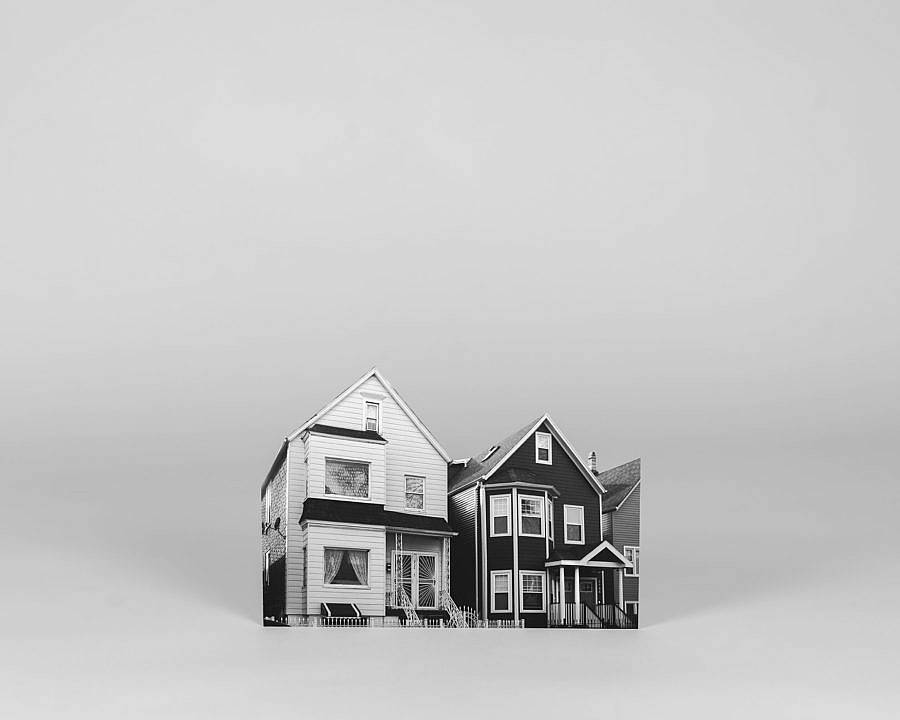
What artists are you interested in right now?
So many, contemporary and late. It’s a real mixed bag. Some relate specifically to the medium of photography and its language, others are glass artists, installation artists, or they work with found objects, the earth, many use construction, artifice, the play of light and space. These artists come out of all different lineages of thinking:
John Chervinsky, Leslie Hewitt, Barbara Kasten, Beth Lipman, Anthony McCall, John Opera, Irving Penn’s (1917 – 2009) still lifes, Patrick Pound, Art Sinsabaugh (1924 – 1983), David Smith (1906 – 1965), Robert Smithson (1938 – 1973), still life photography by Robyn Stacey, Jessica Stockholder, Sara Sze, Christine Tarkowski, Jessica Vaughn, B. Wurtz and Andrea Zittel.
What was the last exhibition you saw that stuck out to you?
One Day at a Time: Manny Farber and Termite Art at the Museum of Contemporary Art, Los Angeles. I experienced the exhibition whilst Helen Molesworth read her “Introduction” and “One Day at a Time” essay from the catalogue in the gallery space. This was broadcast from portable speakers in each room. In each artwork, everyday objects were presented in a way that I could get completely engrossed in. This included Farber’s imaginative use of perspective, and 55 understated postal-photographs by Moyra Davey of bottles in domestic settings titled Empties (2017).
What is one of the bigger challenges you and/or other artists are struggling with these days and how do you see it developing?
The return to and increased embrace of material and craft, not just as a means of carrying a message, also in a self-referential manner. This is reflective of a world that has been overburdened by the production of goods. What to do with this mess we’ve got ourselves into is what everyone is grappling with right now. I think this has induced a re-examination of materials, objects and their associated theories. The October issue “A Questionnaire on Materialisms” (Winter 2016) discusses many of these theories.
As I change the way I relate to the physical materials around me, I can re-establish my expectations and demands of the earth. Ultimately, an increase in empathy towards objects/things will leave room for gentler interaction with the planet. This could reduce the desire for and curb the constant longing for more, more, more, more.
In Bill Brown’s thing theory he states:
“We begin to confront the thingness of objects when they stop working for us… When their flow within the circuits of production and distribution, consumption and exhibition, has been arrested, however momentarily.”
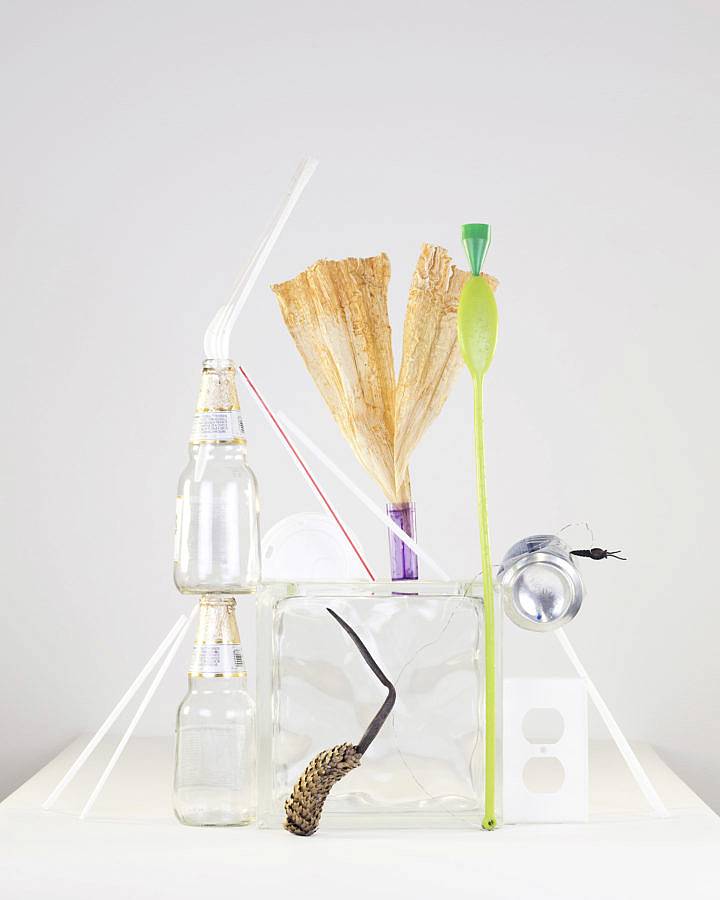
What are you working on right now?
I’m exploring the empathy and apathy humans have for the objects that surround them. I’m playing out my relationship with material things, the agency of objects in the built environment, and the illusionistic properties of the picture plane via photography. Also, I’m thinking a lot about light and transparency and their interaction. I recently did some small scale holograms on glass, and the process is remarkable. I will be doing some more in the coming months.
Who would you love to collaborate with?
Skilled glass artists from whom I can learn. I have photographic skills to offer them in return! Anyone who is willing to trade skills and share thoughts.
How do you choose what to place in your still life photos?
That is usually pre-determined by the series I am working on. For Urban Shells (2018) initially the subject was the built environment traversed by foot, and collecting from it was a way to approach the subject differently. Instead of simply photographing my neighborhood I started taking reusable bags on my routine walks and filing them with detritus that could be stacked into quasi-architectural formations. The individual components were discarded, lost, forgotten and overlooked things intrinsic to contemporary city living. These assemblages ended up consisting of trash, and some organic matter, which hinted to a season and offered a counterpoint to the litter.
While I was walking, collecting, assembling and photographing Urban Shells I was learning glass blowing and casting. These processes triggered me to consider the materials I interact with on a daily basis in a new way. I was strongly drawn to transparent things. In the Logan Square, August 30 images, I took the collected items through a further process by encasing them in resin. This embalming of debris was also another step of distancing from the objects, alongside photographing them. It linked back to my design days, I was exploring ways of igniting desire by employing a clean editorial style.
What are your favorite books or movies?
At the moment I am reading The Courage to Create (1975) by Rollo May and Plan and Play, Play and Plan: Defining Your Art Practice (2018) by Janwillem Schrofer.
The book A Field Guide to Getting Lost (2005) by Rebecca Solnit is a favorite. She seamlessly transitions from personal events to historical and back again, her writing soothes me. Jem Cohen’s film Lost Book Found (1996) I could watch over and over. He uses two styles of narration, one is objective, signalling that the city the could be compartmentalized, the other is poetic and melodic. The 16mm and Super-8 visuals of NYC are entrancing. The bulk of the film conveys the eb and flow of city life at ground level injected with a visceral quality.
What do you collect?
A lot of stuff from the sidewalk. I will be going about my day, walking to the train and something will get my attention. Sometimes these items are functional and sometimes they are things – used up or broken. I find it odd I collect these items because in my personal space there is a pervasive sense of order. This act of collecting seems to interrupt my methodical neatness with a touch of chaos.
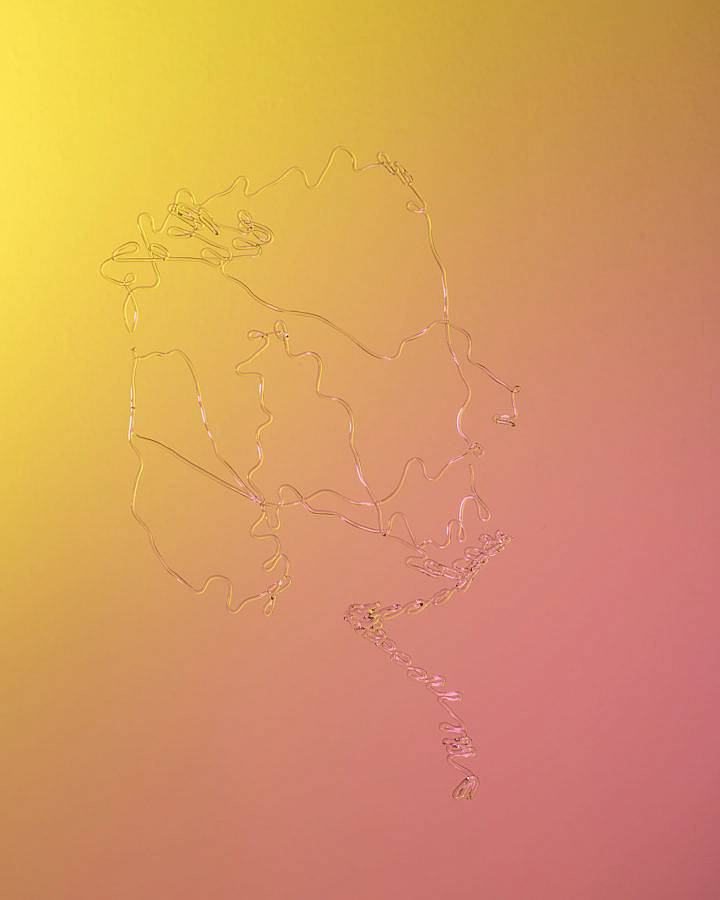
Interview Composed by Madeline Olson
